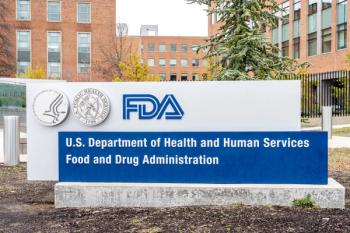
- Applied Clinical Trials-06-01-2016
- Volume 25
- Issue 6
‘Breakthrough’ Program Generates Optimism — and Concerns
FDA's breakthrough drug initiative has proven successful to date, but challenges remain in addressing the expectations and patient concerns surrounding candidates in this program.
FDA’s breakthrough drug initiative is much more successful than ever anticipated, attracting hundreds of applications and speeding dozens of life-saving and important new therapies to patients. More than 45 new drugs and biologics with the breakthrough therapy (BT) designation have come to market since the program was established in 2012, many benefitting from special assistance from FDA experts.
Even more notable is that the program actually appears to be accelerating clinical development of promising therapies-as opposed to just speeding up the agency’s approval process. An
Targeting assistance
The program’s success also has created some confusion in the healthcare community about the significance of drugs receiving BT status. More than half of physicians believe that BTs have been proven safe and effective in randomized trials, according to a recent study in the Journal of the American Medical Association (April 12, 2016), and consumers have high expectations for new drugs described as “breakthroughs,” says another JAMA article (September 2015).
FDA seeks to address these overly optimistic expectations for BTs by clarifying its terms and improving BT program operations. Although these drugs may “look really good” in early trials, many may “fail to deliver on the promise” initially shown, explained Richard Moscicki, deputy director of the Center for Drug Evaluation and Research (CDER) in a recent
To be able to provide assistance to sponsors of true BTs, FDA also seeks to limit the volume of inappropriate BTDR requests. A new “preliminary BTDR advice” request process asks sponsors to file a short form with basic information on its BT candidate, namely whether the indication is serious and life-threatening, other available drugs, and early clinical evidence (trial design, endpoints, number of subjects enrolled). The relevant FDA review division will discuss the request in a teleconference and offer nonbinding advice on whether to file the full BTDR at that time.
Patient concerns
Meanwhile, BT therapy development is leading to more “seamless” clinical research programs, particularly for oncology treatments. Instead of three distinct clinical trial phases, FDA is encouraging studies that can rapidly enroll patients based on preliminary evidence of effectiveness. Some patient advocates, though, have objected that such approaches increase risks to patients. FDA officials commented in a recent journal article that well-designed protocols, clear rationales for expanding patient cohorts, and updated informed consent can address these issues. FDA also
Another concern is whether expedited development programs can fully incorporate patient experience in clinical trials. Although sponsors increasingly are tapping patient groups for input on study design and key endpoints, accelerated studies may conclude before they can collect and assess patient-reported outcomes and other measures. One approach supported by FDA leaders is to encourage more standing clinical trials able to investigate innovative therapies more efficiently by reducing the need to identify sites, recruit patients, negotiate research agreements, and enlist CROs for every new promising treatment.
FDA and the research community also are examining whether expedited development programs can efficiently evaluate combination therapies and diagnostics needed to identify patients likely to benefit from a personalized breakthrough medicine. Patient advocates led by FOCR have proposed that FDA establish a “virtual” Oncology Center of Excellence that would better coordinate scientists and reviewers in separate FDA Centers to achieve a more integrated approach to regulating combination cancer therapies. FDA has offered strategies that will improve the ability of its Office of Combination Products to accomplish similar goals, but may be willing to devise a pilot program to test this new “disease-oriented” regulatory approach.
Articles in this issue
over 9 years ago
Bring Your Own Device for Trial Outcome Assessmentover 9 years ago
Antibiotic-Resistance Focus Could Benefit Clinical Trialsover 9 years ago
EFGCP Renews Campaign on Older People in Researchover 9 years ago
Paperless Processes on the Way Out?over 9 years ago
EHR eSource: Sword of Change?over 9 years ago
Critical Update to Cardiac Safety Assessmentsover 9 years ago
Regulatory Considerations are Key in eSource Data Integrationover 9 years ago
Engagement Shift: Informed Consent in the Digital Eraover 9 years ago
Emphasizing ‘Solutions’ in eClinical Tools for Sitesover 9 years ago
Quality Remote Monitoring: The Tools of the GameNewsletter
Stay current in clinical research with Applied Clinical Trials, providing expert insights, regulatory updates, and practical strategies for successful clinical trial design and execution.


